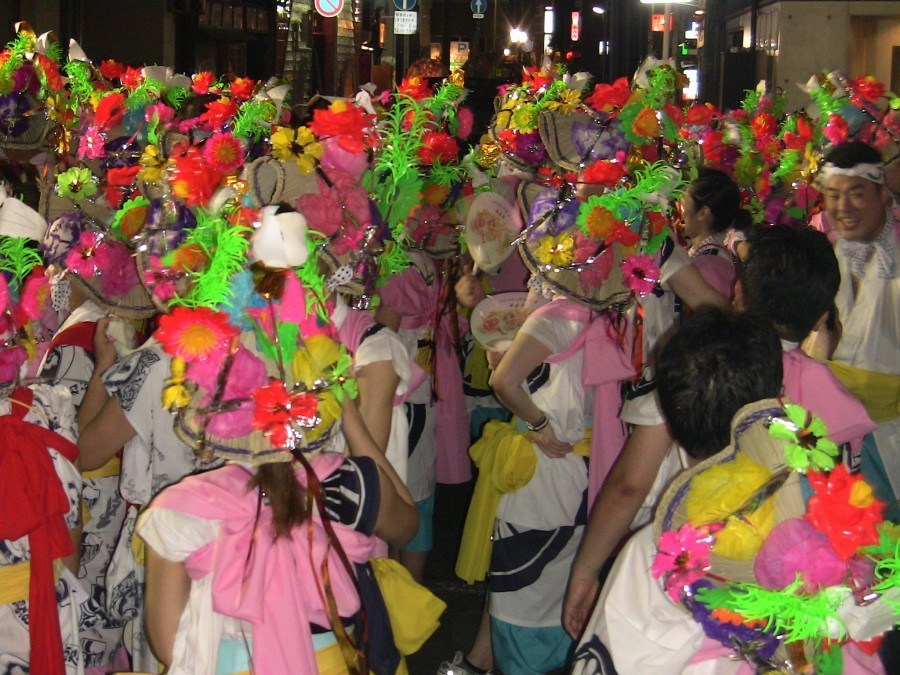Like this post? Help us by sharing it!
Japan is not known for doing things by halves. Having developed one of the world’s most technically advanced and super efficient high speed rail networks and taken the experience of going to the toilet to a whole new level it should come as no surprise that when Japan puts on a festival it’s like no other show on earth. Our Mark Johnson reports on his recent trip to Japan which saw him head up to northern Japan between tours to see how they celebrate in Tohoku.
I’m wandering the streets of central Aomori (northern Tohoku), it’s 7pm and 32 degrees centigrade and I’m surrounded by a few thousand people lining the streets 5-10 people deep for as far as the eye can see in every direction. Amongst the chatter I can hear distant chants and the looming sound of taiko drums. Welcome to the Aomori Nebuta Matsuri, one of the largest and best known festivals in Japan.
[youtube=http://www.youtube.com/watch?v=cJOI9LL9Ih8&feature=plcp]
Being Japan there is no pushing and shoving and everyone is patiently waiting in anticipation of what it to follow. As the drums roll closer I soon catch a glimpse of the first brightly lit float in the distance edging around the corner. This marks the start of a three hour long parade of the most colourful exotic floats, costumes and festivity and one of the highlights of the festival season in the north.
The intricately decorated floats with imposing demonic faces each the width of the 4 lane street loom high above the spectators whilst the drums and chanting pound through the air creating an electric atmosphere. The floats keep coming and coming until eventually my camera battery dies from lining up too many pictures and taking too much video footage. The drumming is accompanied by flutes, chanting and trance like dancing and the crowd are actively encouraged to join in. The spectacular array of costumes change with every group and every now and then out of nowhere a random Elvis will appear to cheers and laughter.
Many of Japan’s best loved anime characters including Anpanman and Doraemon are represented as well as some of Japan’s biggest brands and sponsors of the event: Asahi, Kirin, 7-11, Panasonic, Hitachi and so on. This year many of the floats carry messages of goodwill to the people of Tohoku, a poignant message in the year following the tsunami and earthquake in 2011.
About Nebuta:
There are many theories surrounding the origin of the festival but the most likely explanation is that it was born out of the Tanabata festival (imported from China in around 755) celebrating the meeting of the deities Orihime and Hikoboshi who according to the legend were separated by milky way. Tanabata meaning 7th night is celebrated in July or August depending on whether you are using the lunisolar or Gregorian calendar. The giant floats depict scenes to scare off the enemy, take up to a year to build and are decorated with lights and coloured paper. Costs run in to millions of yen and the whole community get involved. As always visitors from overseas are made especially welcome and are invited to join in with the fun. It is even possible to take part in the parade with prior arrangement.
The idea of enduring 30+ degree heat every day for some may seem like hell on earth but for those that are brave enough to visit Japan during the summer months; as well as consistent sunshine, one of the world’s most spectacular displays awaits. Most events are followed by equally impressive fireworks and feature an array of colourful street food ranging from barbequed squid on a stick to octopus dumplings and chocolate bananas. The festival spirit in Japan is something that really can’t be missed during a summer visit.
[slideshow size=”half-width”]
The surrounding area hosts several festivals over a two week period (end of July through to beginning of August). As there is so much going on in the area it is quite easy to catch more than one festival during your stay. Hachinohe Sansha Taishai festival is said to be Japan’s biggest float festival and the Neputa festival in Hirosaki with it’s gigantic 22m high floats is equally impressive. Although most of the festival action is at night there are lots of events during the day too. There’s also plenty to see nearby including Hirosaki with it’s beautiful castle, Fujita Gardens (immaculate gardens with a stunning backdrop and tea house) and a walk through the samurai district.Summer festivals are a great add-on to a group tour or self-guided trip or simply a reason in itself to visit northern Tohoku – one of the lesser visited, but none less impressive areas of Japan.
As we have said throughout this blog, festivals are a great cultural event to experience in Japan. There are thousands of festivals that take place throughout Japan all through the year, but the summer time definitely has more than its fair share.
I thank Mark for sharing this with us and I can’t wait until next year…..first though we have the autumn festivals not to mention the winter ones and then the spring festivals….Japan does love its festivals and so do we!
The ‘Northern Highlights’ self guided adventure heads up to the beautiful Tohoku region. Why not tailor the trip to take in the Tohoku ‘Big 3’ festivals in August.


